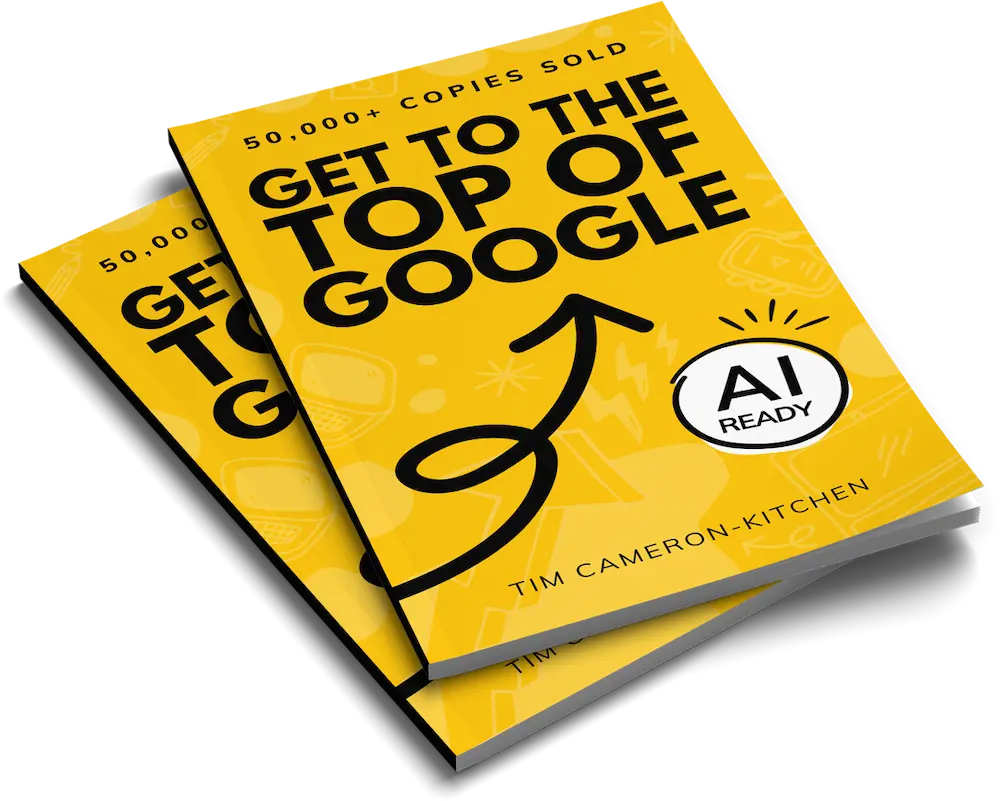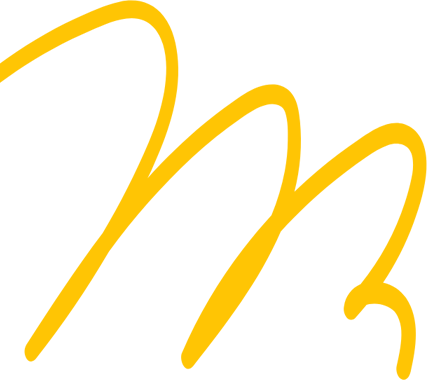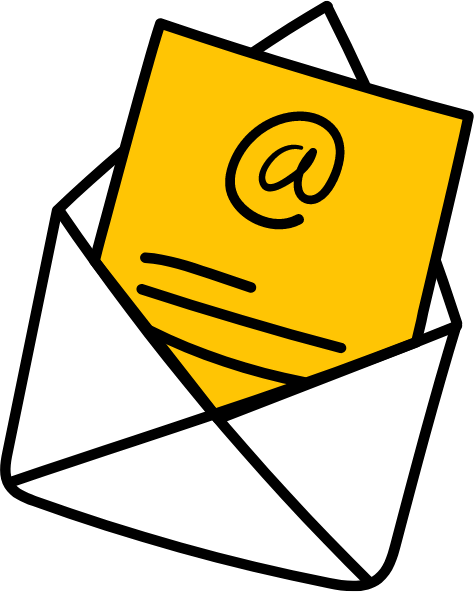
Get Weekly Marketing Tips
Join 30,000+ marketers and get the best marketing tips every week in your inbox
Writing Content, Guest Blogs & Editorials
Well-crafted written content can take a casual reader and convert them into a paying customer, or even transform the merely curious into ardent supporters of your brand message. This blog post will teach you how to transform the ideas that you developed in the blog post The Ultimate Guide To Identifying Your Target Market & Building A Tailored Digital PR Strategy into content that will make your website rank highly and your business become respected as an authority in your field.
In this blog:
- Creating a Content Calendar
- Writing for Your Target Audience
- Developing a Brand Voice
- Understanding Tone and its Impact on Your Writing
- How to Actually Write an Article
- Links and Anchor text
1. Creating a Content Calendar
Coming up with excellent ideas is a good start, but simply vomiting those ideas out onto a blog or into a series of articles as and when you feel like it simply isn’t the way to go about it. In order for your content to be most effective as a marketing tool, it needs to be part of a planned marketing effort that takes a number of factors into account. In short, you need a content calendar.
Picture this: you’ve worked hard and followed the action points outlined in this blog post series and created a killer first blog post that has heaps of traffic and plenty of engagement. But now your readers are asking “what next?” and you’ve no idea when the next post will be ready or how it ties in with the last one. You’ve just missed an excellent opportunity to get your casual readers to turn into repeat readers, and it’s all because you didn’t create a content calendar to help you plan your writing schedule ahead of time.
A content calendar will enable you to produce content that coincides with key events in the year, such as conferences that are specific to your industry or events that are recognised by the wider public, like holidays, news stories, or the release of the latest blockbuster. Whatever’s relevant. It also enables you to visualise the content that you create as a whole so that you can see on a macro level whether any topics have been neglected or need some reinforcing. Using a content calendar will help you patch up any holes that appear in your coverage of your subject with plenty of time to spare.
Lastly, a content calendar is useful because it enables you to stay organised and stick to deadlines. Many blogs or article series start out ambitiously, but trail off once the honeymoon period is over and the duties of the real world rear their ugly heads. It can also help you to think of your blog as an ongoing body of work that is interconnected (and therefore more useful to your readers), rather than a series of separate articles only held together by a common theme. You can even use a content calendar to enable yourself to hit more ambitious goals. Rather than simply aiming to produce twenty random blog posts in a year, you could instead aim to produce twenty blogs that also function as chapters and release the series as a complete book after twelve months.
Creating a content calendar is easy with a free tool such as Google Calendar, and it will mean that you don’t miss key events or run out of ideas early and come to a screeching halt. When putting together a content calendar, make sure you do the following:
- Mark out key dates for your industry and tie a blog idea to them. You could write a post on “ten things that we learned from the winter conference” after an important conference, or you might create content targeting a particular group of buyers in the run-up to Christmas.
- Schedule when your content is going to be written, published, and supported by social media activity. Whether you decide to post every week or every day, it helps to do things on a timetable that your readers can predict.
- Link in your social media activities so that they are running side-by-side with and complementing your PR activities.
Check out this very useful yearly outline from PR goddess Lexi Mills, who has worked as Head of Digital PR for Distilled and on digital PR campaigns for brands including bathrooms.com. Here, she highlights the main digital PR and social media processes. You want your digital PR activities to work side by side with your social media, so plan them alongside one another.
When you have a basic yearly structure and a digital campaign in place, design a monthly content calendar where you decide on themes for your content. Specify the quantity of content that you plan to produce and then go into detail with what you’re going to be writing about and when you’re going to be publishing it.
At Thinkplus, our Content Marketing and Digital PR team uses a colour-coded content calendar. We highlight monthly themes and target keywords, then work our way down researching blog topics and outreach plans based around these.
With a content calendar under your belt, it’s time to get writing.
2. Writing for your Target Audience
What’s the difference between middlingly successful writing and phenomenally successful writing? It isn’t always the quality of the sentence structure or the author’s ability to infallibly choose the right word for each moment. In fact, if we look at one of the most successful pieces of writing of the last decade, EL James’ bondage-based romp Fifty Shades of Gray, we can quickly see that the quality of the writing isn’t actually that important at all.
Here’s a sample of her writing just for fun: “His voice is warm and husky like dark melted chocolate fudge caramel… or something.” But similes like that one didn’t stop James from making more money than Croesus.
What’s important is that an author understands who they are writing for and what they want to read and communicates to that audience with language that they can understand. EL James may not have won any respect from the critics, but she wrote a piece of fiction that her target audience found deeply satisfying and is rich beyond her wildest dreams as a result of that. There’s no such thing as good writing or bad writing — only effective writing and ineffective writing. In this case, your writing is not going to be judged on how many Nobel prizes for literature you receive, but how effective your writing is in helping you to achieve your marketing goals.
If you are not a natural writer or don’t consider yourself a particularly literary person, then you should see this as excellent news. It doesn’t matter if your writing is a little rough around the edges at places so long as you are writing engaging content that is laser-targeted to your reader. If you are a plumber, write like a plumber. If you are a gardener, write like a gardener. This naturalness will not only make your life simpler, but it will also help you to come across as more authentic to your readers, which is always a winning quality.
To write for your audience, you have to know your audience. Fortunately, we already identified our target audience earlier, so we have a good idea of who they are and what kind of content they like. If you have a number of target audiences, as most businesses do, then consider breaking up your content into different styles that will suit different audiences. If 50% of your customers are demographic A, 30% are demographic B, and 20% of your customers are demographic C, then you could break up your content into similar ratios to appeal to each type of customer. This, of course, is providing that you are never alienating your primary target.
Once you’ve identified your audience, tailoring your writing to suit your audience is the next step.
Request a free website and marketing review and our team will tell you how to improve your marketing.Is your marketing underperforming?


3. Developing a Brand Voice
Once you start creating content for your brand, one of the key things that you will need to keep in mind is the brand voice that you are aiming to convey. A brand voice is not what you say — that’s the brand message — but how you say it. It refers to your choice of vocabulary, your word order and the length and rhythm of your sentences. Once you’ve developed a brand voice, you can use it consistently across all of your written content. This includes not only your blogs and articles but also your web copy, emails, and ad campaigns.
Developing a brand voice will help distinguish you from your competitors. Compare:
“FOR THAT MOMENT WHEN YOU NEED IT MOST,
WHEN THE ENERGY AND THE GOOD TIMES FLOW.
WHATEVER YOU DO, DO IT WITH ENERGY”
with:
“hello, we’re innocent and we’re here to make it easy for people to do themselves some good (whilst making it taste nice too)”
It will come as no surprise that the first piece of copy was written by an energy drink maker (Lucozade — they have the word energy in there twice!) and that the second piece of copy was written by healthy (but sugar-laden and Coca-Cola owned) smoothie maker Innocent. Both tags play fast and loose with punctuation, but in a way that reinforces their brand message. Lucozade opts for the powerful all caps because they want consumers to associate Lucozade with strength and power. Innocent decide instead to play so innocent that they don’t even know how to use punctuation, almost making the copy look child-like.
Compare also the choice of language. Innocent say two things about their product: 1) that it tastes nice and 2) that it does good. Good and nice are two adjectives that you’ll be told to steer clear of in any kind of writing class, but that’s exactly why they use them. They’ve chosen simple words because they want to imply that they are a simple product: just juice, no junk.
Lucozade, on the other hand, has gone with the impressively stupid “whatever you do, do it with energy.” Want to drive dangerously? Do it with energy. Making a poor life decision? DO IT WITH ENERGY. But it fits entirely with the energy drink philosophy — actions are more important than words (or thinking) — and so ties the brand voice in with the product in a way that is consistent and authentic.
The other key element of a brand voice is that it personifies your business. Brands don’t speak; people do. So when your brand starts to speak, the aim is that customers stop thinking of your brand as a faceless entity and start thinking of it as a person. A person that they can trust and feel familiar with. This is why every piece of advice out there on brand voice asks marketers to ask themselves, “if your brand were a celebrity, which one would they be?” Making your brand appear more personable in the eyes of your consumers makes you distinct from your competitors and helps your consumers build a relationship with your brand.
When it comes to creating content for your brand, you should do so with a clear brand voice in mind. To help you identify your brand voice, try asking yourself: why was your company created in the first place? (No, the answer is not “to make shed loads of cash,” or at least, that’s not the answer as far as your marketing efforts are concerned!) Innocent aim to make drinks that do good and taste nice, so they have a simple voice for a simple aim. Thinkplus aims to give small businesses the tools that they need to succeed online, without all the crap, so we go out of our way to understand the needs of small businesses and we write how we speak.
4. Understanding Tone and Its Impact on your Writing
Once you identified the brand voice that you hope to achieve, it’s time to tailor the tone of your writing accordingly. Tone might seem a difficult concept to pin down, but it’s actually something that we all use all the time in our daily lives. Imagine that you find yourself needing to make a phone call but your mobile is dead. Your best friend is over at your place, so you say:
“Hey, dude! Give us your phone, I need to make a call!”
(You may not talk like this because you may not be a twenty-something American from the nineties, but you get the point). Now imagine the same situation, but you are outside and you are going to have to ask a stranger if you can use their phone call. Let’s go one step further and imagine that that stranger is a police officer, it’s raining, and you feel hungover. Think about the language that you are going to use, and how it is different to the language you would use with your best friend. You might say something like:
“Excuse me officer, sorry to bother you, but is there any chance I could borrow your mobile? It’s an emergency and mine is broken.”
Both sentences say more or less the same thing, but the way that message is communicated is totally different. That difference demonstrates what tone is and why it is important. To help you nail tone, we’ve highlighted a few elements that you can pay particular attention to.
Formal versus informal language. One of the key differences between the way we spoke to that police officer and the way that we spoke to our friend was the formality of the language we used. Formality implies professionalism, respect, and even authority. As a result, formal language works best with professionals, such as medical and legal people, where these attributes are key. On the other hand, formal language can be boring and unpersonable. Informal language is warm and friendly, but it is also associated with being reckless and unprofessional, which might just be fine if you are selling an energy drink. One of the ways that we suggest formality is indirect language. Compare the formal “is there any chance I could borrow your…” to the informal “give me your…”
Yo, dawg! Some red hot slang coming your way! If you have taken the informal route you are probably considering using slang, but it’s worth thinking over carefully. Slang is a high risk, high reward activity. If done correctly, it positions your brand as part of the in-group. But if used incorrectly, or in a way that is at odds with your target market, it’s at best painfully embarrassing and at worst potentially devastating. The parody Twitter account @BrandsSayingBae calls out the most painful examples of brands Tweeting like a teenager. I defy anyone over the age of 12… actually, anyone with eyes, to sit through all 3:27 of that painful slang-strewn Chevy ad from 2014 on YouTube. Though to be fair, with 900,000 views and counting they must be doing something right.
Technical language, also known as jargon, is hated by many people because it conveys a sense of superiority from the speaker. But that can actually be an advantage should superiority be a selling point of your business — financial services in particular often employ jargon to make themselves appear superior to their customers, and when selling computer hardware objective superiority is an important factor for hardcore geeks. For most businesses most of the time though, the clearer the language the more relatable your brand will be.
Word order and choice of pronouns can also subtly affect the tone of your content. Compare “Our product was designed with you in mind” to “You may want this, which is why we do that”. First of all, what comes first, your product or your customer? If your customer is the most important part of a sentence, put them first: “You may want this, which is why we do that.” Alternatively, putting the product first and the customer second implies that the product is the more important part of the equation. It’s usually not best practice to put your brand ahead of the customer.
Request a free website and marketing review and our team will tell you how to improve your marketing.Is your marketing underperforming?


5. How to Actually Write an Article
This is it. The moment has come to finally tackle that blank page! The key to writing effectively is to always keep your reader in mind. You are not writing for yourself; you are writing for your potential customers. You have to give you readers something of value. The simplest way to do this is to solve a problem for someone.
Solving a problem is one of the most popular formats for internet writing. When people have a problem these days, one of the first things they do is ask Google for a solution. That’s why “how to guides” are so common place.
The key to getting traffic on this kind of article is to be as specific as you can. The more specific the problem and the person you are writing for, the more likely it is that your articles will do well. This is a chance for you to really use your expert knowledge from your business experience to solve a problem that many of your customers have.
What most bloggers do is look on Google to see what everyone else is writing about then try their hand at the same thing. This is actually the complete opposite of what they should be doing. You should be using Google to see which questions haven’t yet been answered well, then filling in this “gap in the market” by writing a blog on the subject that is better than everyone else’s. Be less “me too” and more “unique selling point.”
For example, if I wrote a blog titled “a backpacker’s guide to Thailand”, there’s less than a snowball’s chance in hell that I’d rank for that. There are probably tens of thousands of articles like that online already. No matter how good I am as a writer, it’s hard to attract an audience when you aren’t bringing anything new to the table. On the other hand, the “vegan travel guide to breakfast in Macedonia” is much more likely to rank highly because very few people have written about that topic before. The beauty of the internet is even a niche blog can get tens of thousands of hits because your potential audience is anyone with an internet connection!
The other advantage of writing very specific content is that it can be strongly targeted at your potential customers. If you sell vegan snack bars, then not only will content about vegan snacks rank higher because there’s less competition, but it also has a much better chance of converting because the people reading the article are much more likely than the general population to be interested in the product.
6. What is Anchor Text and Why Is It Important?
Anchor Text is the visible, clickable text in a hyperlink. In most internet browsers, it’s blue and underlined, like this link to Moz’s blog on anchor text or this blog from Thinkplus. Here is another example for a podcast on anchor text.
In the above Moz example, the anchor text is “Moz’s blog on anchor text.” The link itself points to the webpage “https://moz.com/learn/seo/anchor-text.” Anchor text is important because search engines (such as Google) use the anchor text to work out what the webpage that is linked to is about.
So in the example, Google knows that “https://moz.com/learn/seo/anchor-text” is a link to “Moz’s blog on anchor text” because the anchor text tells Google exactly what it is.
Still with me?
For the same reason, one of the worst examples of anchor text is “click here.” When Google reads the anchor text “click here,” it learns nothing about the webpage that is being pointed to.
To improve the visibility of your website when you build backlinks to it from your digital PR articles, you want to let Google know what is being linked to with the anchor text. Go paintballing in Kilmarnock is an example of strong anchor text because Google reads “go paintballing in Kilmarnock” and knows that the link is probably pointing to a webpage about paintballing in Kilmarnock.
On the other hand, company names don’t make for the best anchor text. For example, “Happy Smiles” is not great anchor text because Google’s robots can’t necessarily work out that Happy Smiles is the name of a dental clinic. A better example of anchor text in this example would be something like “cosmetic dentist in Hull”.
Now that you get what anchor text is, how it works, and why we use it, let’s answer some common questions about using anchor text when building links to your business’ website.
How Many Links Should I Include?
So you’ve got an editor interested in your article topic and you’re setting about writing an article with thoughtful research links and links back to your own website (with some good anchor text). Just how many links should you put to your own website in this article though? One or two is usually enough.
You don’t want to stuff articles with links, especially as that can be irritating to editors and readers. Not to mention that excessive backlinking looks like spam. But then again, if you’ve got some really relevant blog posts you’re linking in, you don’t want to miss out valuable info either. Make a firm decision about which links are relevant and which aren’t. Then have look at what the editorial guidelines are on the website you’re writing for and decide from there.
How Often Should Links be Pointed at my Homepage / Other Webpages?
Though linking to a homepage is okay, you don’t want to just be linking to your homepage. Hopefully your website has lots of great and informative content — including blog posts (which we discuss later on in the book) — so you want to have your article links pointing to different pages on your website.
You always want to make sure you’re linking to the most relevant webpage. If you’re an e-cigarette business writing about travelling with e-cigarettes, you don’t want that article just to link to your homepage. Rather, it could be linked to a useful blog post you wrote on your site about travelling with e-cigs instead. Choose the most relevant webpage to link to, and mix it up in your articles.
Bloggers, writers, journalists, and editors naturally use slightly different phrases (anchor text) when linking to other articles and blogs, and you should to. If you’re creating a bunch of articles using the same anchor text again and again and again… well, that doesn’t look good. Instead, you should vary the text and use different phrases to describe what a webpage is about. Added to that, you should make sure you’re linking to as many different pages on your site as you can.
Where in an Article Should Links Go?
Ideally, you want to embed links within the body text of the article. Yes, right in the belly, the same way that you would link to resources, statistics, and quotes you’ve used from other websites. This allows the links to be a more natural, flowing part of the article rather than just plonked at the beginning or the end of an article. This way, your link becomes another valuable resource you’re using to back up what you’re saying.
But Hey, Aren’t We Just Going to Annoy Editors?
I got it, I read your mind. Getting all those links to your business’ website under editorial radar isn’t always that easy. Sometimes editors will see links and be up in your grill about how they don’t accept links their articles, or they might even start asking for sponsored content fees. Here are some tips for being smooth with your linking (and anchor text) as well as with those editors…
- Linking to Blogs Works Well: Informative, awesome, and good looking blog posts are much easier to link to than pages that are advertising your products or services, for example. Create excellent and informative blog content that is worth linking to from articles.
- Embed It in the Body Text: Making it natural is another important skill here. Embed links within an article’s body text and avoid saying things like “check out my article over here…” and definitely no writing “click here”! Thinking about what anchor text you’re using (and being subtle about it!) will definitely help you here.
- Remind the Editor that Your Article is Just for Them: Remind the editors that they’re getting unique content off of you — and that’s valuable for them. This article isn’t going to anyone else. It’s especially for them. It’s written by an expert (that’s you) and you’re proud to be publishing it with this editor. Yes, flattery helps. Use it sparingly though. Don’t be gushing on editors.
- Link to Other Stuff in Your Articles: What you don’t want is to have written a whole article and to have only thrown one link to your own website’s blog post. That totally sticks out. Link to other relevant sources, resources, websites and blogs within the article. Editors will often see these as showing the article is well researched, making it more interesting and useful for readers. Don’t cram a gazillion links in there though! Around 5 total (including a client link) per 1000 word article should be enough. By the way (again), you don’t want to link to any of your competitor’s websites!
How About Getting in Difficult Keywords and/or Location Names into Articles?
There’s no denying that some target keywords are more difficult to use than others, especially ones with location names attached (e.g. “cosmetic dentist York”). This is where good topic research, publication research, and content planning comes in.
For difficult keywords, look for topics which are as closely related as possible, or for broader topics where you can break it down into specific sections within the article later on. This will make using those keywords much more straightforward and save you from cramming them in where they look funny — which you never want to do.
Researching publications is important here too. You’re not going to be getting “cosmetic dentist York” in an article for any old beauty based website. Look for publications that a) deal with dentistry, b) are based in York, or ideally c) are both of those things.
The better fit the publication, the easier naturally getting keywords and links to your website into articles will be.
Get your FREE Website Review
As a thank you for reading this blog, we’d like to offer you a free review by one of our expert Review Ninjas, free of charge. We’ll analyse your website, make recommendations about the sort of digital PR strategy that you can embark on, as well as doing some digging into what your competitors have been up to. Just fill in the short form here and your review will be delivered to you by email in 2-3 working days.























